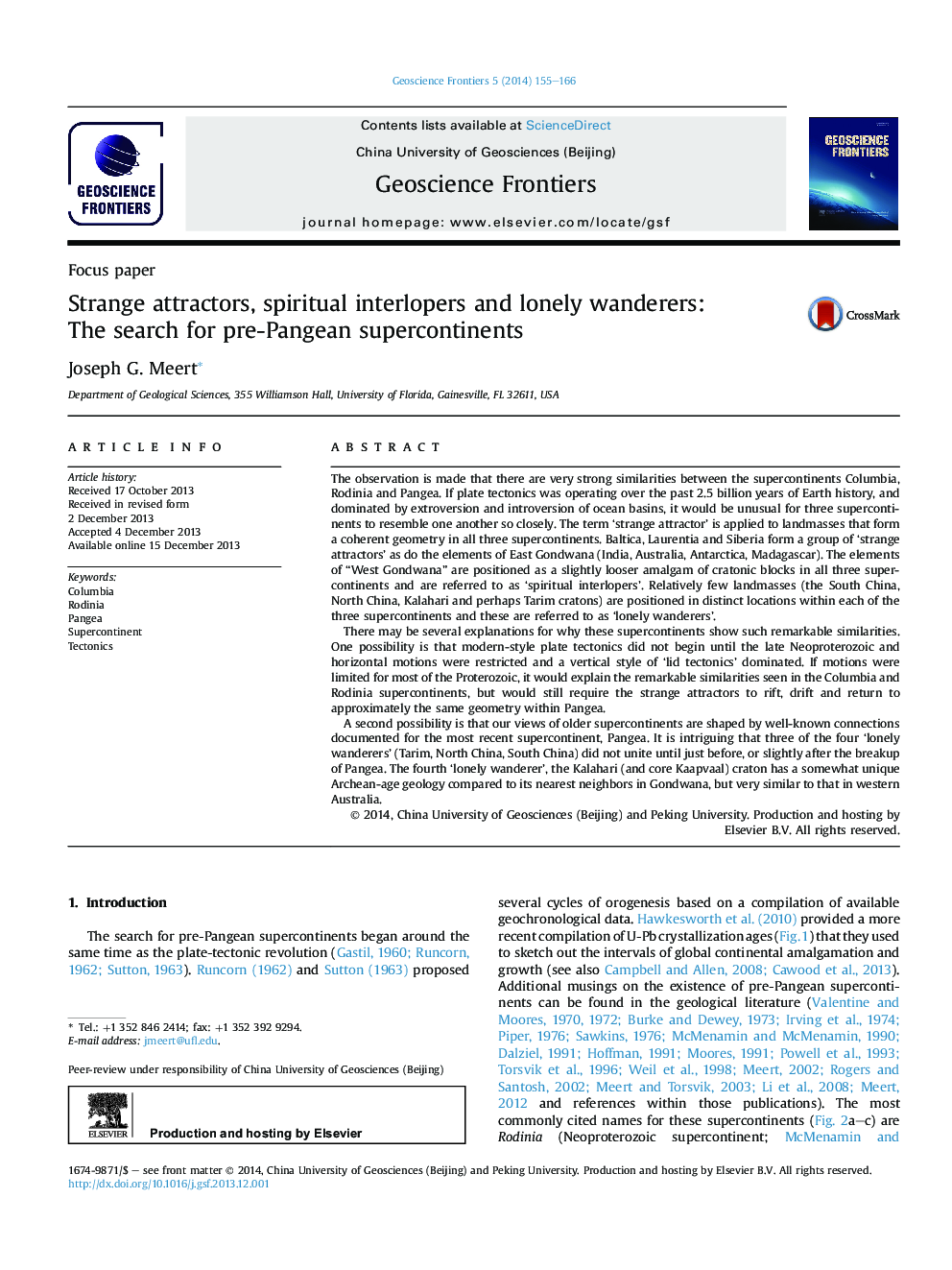| کد مقاله | کد نشریه | سال انتشار | مقاله انگلیسی | نسخه تمام متن |
|---|---|---|---|---|
| 4681788 | 1348874 | 2014 | 12 صفحه PDF | دانلود رایگان |

• Comparison of supercontinent reconstruction reveals remarkable similarities.
• Strange attractors in Columbia, Rodinia and Pangea are Siberia, Laurentia and Baltica.
• Reconstructions may reveal “Pangean” bias or fundamental mode of tectonics.
The observation is made that there are very strong similarities between the supercontinents Columbia, Rodinia and Pangea. If plate tectonics was operating over the past 2.5 billion years of Earth history, and dominated by extroversion and introversion of ocean basins, it would be unusual for three supercontinents to resemble one another so closely. The term ‘strange attractor’ is applied to landmasses that form a coherent geometry in all three supercontinents. Baltica, Laurentia and Siberia form a group of ‘strange attractors’ as do the elements of East Gondwana (India, Australia, Antarctica, Madagascar). The elements of “West Gondwana” are positioned as a slightly looser amalgam of cratonic blocks in all three supercontinents and are referred to as ‘spiritual interlopers’. Relatively few landmasses (the South China, North China, Kalahari and perhaps Tarim cratons) are positioned in distinct locations within each of the three supercontinents and these are referred to as ‘lonely wanderers’.There may be several explanations for why these supercontinents show such remarkable similarities. One possibility is that modern-style plate tectonics did not begin until the late Neoproterozoic and horizontal motions were restricted and a vertical style of ‘lid tectonics’ dominated. If motions were limited for most of the Proterozoic, it would explain the remarkable similarities seen in the Columbia and Rodinia supercontinents, but would still require the strange attractors to rift, drift and return to approximately the same geometry within Pangea.A second possibility is that our views of older supercontinents are shaped by well-known connections documented for the most recent supercontinent, Pangea. It is intriguing that three of the four ‘lonely wanderers’ (Tarim, North China, South China) did not unite until just before, or slightly after the breakup of Pangea. The fourth ‘lonely wanderer’, the Kalahari (and core Kaapvaal) craton has a somewhat unique Archean-age geology compared to its nearest neighbors in Gondwana, but very similar to that in western Australia.
Figure optionsDownload as PowerPoint slide
Journal: Geoscience Frontiers - Volume 5, Issue 2, March 2014, Pages 155–166